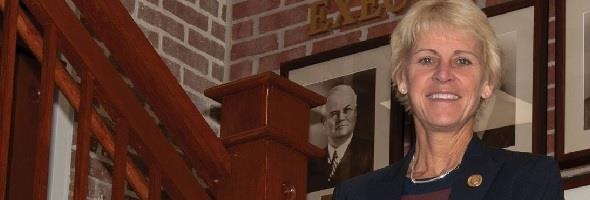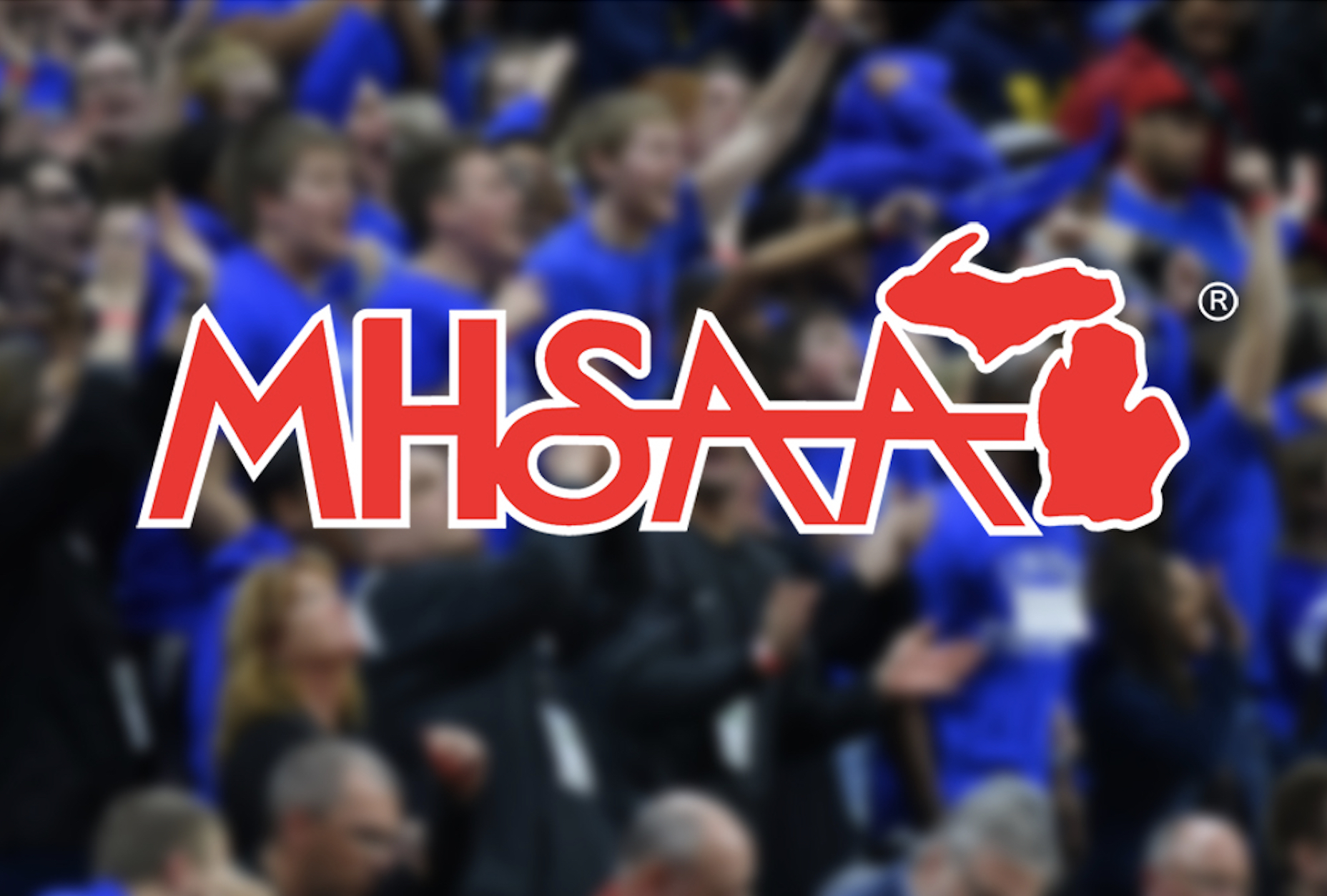
NFHS Voice: Participants Show Resilience
September 28, 2020
By Karissa Niehoff
NFHS Executive Director
The resiliency of players, coaches and leaders in high school activity programs the past seven months has been amazing. As attempts continue to offer all sports and performing arts this year, these individuals are making the most of tough times and demonstrating great resolve to change.
No doubt, high school juniors and seniors involved in high school sports and performing arts would have preferred a less turbulent end to their high school days, but many have been willing to go to great lengths to have an opportunity to participate.
In Michigan, when football was initially moved to the spring, student-athletes had two choices: be upset that their sport was postponed or seize the moment and look for new opportunities. Royce Daugherty of Watervliet High School chose the latter.
A 6-foot-3, 300-pound two-way starter last year as a freshman on the Watervliet football team, Daugherty opted to join the cross country team! He said he decided to run cross country because it would help him get tougher mentally and physically.
Daugherty’s decision was perhaps predictable given that he played four sports – football, wrestling, basketball and baseball – as a freshman. Although the switch was short-lived with Michigan reinstating football a couple of weeks ago, Daugherty’s resilience is remarkable and a good predictor of future success.
In Colorado, with football on hold this fall, members of the Limon High School two-time defending Class 1A state football championship team petitioned the school administration to resurrect the golf program.
“Sports are our lifeline,” said Andy Love, the school’s baseball coach who agreed to coach the golf team, in an article posted on CHSAANow. “Our community follows our sports so strongly. It gives our kids this great atmosphere and environment whether it’s the football field, the basketball court or whatever. Our community rallies around our kids.”
Turning a problem into an opportunity, the Limon High School football players and staff demonstrated the never-give-up spirit of high school activities.
In Kansas, with the heading of “the show must go on,” the Goodland High School athletic director and superintendent stepped in to coach the football team a few weeks ago because the head coach and assistant coach were quarantined during the week. The result? Goodland, a Class 3A school, defeated Liberal High School, a Class 5A school!
Coaches have demonstrated resiliency as well by finding new ways to conduct competition and keep students engaged. In Minnesota, at a swimming meet between Chaska High School and Bloomington Kennedy High School, Chaska swimmers occupied lanes 1 to 4, while Kennedy swimmers were in lanes 5 to 8 for social distancing purposes.
In the same state, the South Suburban Conference decided to conduct virtual swim meets this fall. Each team competes in 11 races in their own pool, and the coaches compare times to determine scoring. Two methods in the same state, both done to keep students engaged but to minimize risks of the virus.
On the performing arts side, teachers and leaders have benefited from an aerosol study conducted by the NFHS and more than 125 other organizations to determine best practices. In some cases, band and other music programs were moved to the spring, but leaders continued to engage with students in many innovative ways.
Larry Friend, assistant principal of Caesar Rodney High School in Camden, Delaware, in a Dover Post article, told his students, “This is not the time to put the instruments aside. This is not the time to stop singing. This is not the time to run away from your passion. This is an opportunity to run toward your passion and to find what it is that motivates you to reconnect.”
Band directors in Michigan – like those in many other states – are finding new ways to keep music going during the pandemic – from outdoor band camps to all-virtual rehearsals.
“We have some really incredible band directors doing some really neat things locally,” said Josh Bartz, director of bands at Portage Northern High School in an interview with WWMT-TV in Kalamazoo.
In the same interview, Chris Ludwa, assistant professor of music at Kalamazoo College, said, “I think you will always find ways to make art. Oftentimes, when in society there is deep need, deep pain, struggle, oppression – that’s the time when art flourishes.”
These are but a few of the great stories that have occurred across the country as players, coaches, administrators, officials, parents and fans are making the most of tough times. While these student participants may not become stellar athletes at the next level or excel at higher levels in the arts, their resiliency through these tough times will play a major role in their future success.
High school activity programs – building resilient people for the future of our nation.
Dr. Karissa L. Niehoff is starting her third year as executive director of the National Federation of State High School Associations (NFHS) in Indianapolis, Indiana. She is the first female to head the national leadership organization for high school athletics and performing arts activities and the sixth full-time executive director of the NFHS, which celebrated its 100th year of service during the 2018-19 school year. She previously was executive director of the Connecticut Association of Schools-Connecticut Interscholastic Athletic Conference for seven years.

This Week in High School Sports: 12/11/25
By
Jon Ross
MHSAA Director of Broadcast Properties
December 11, 2025
This week's edition details how Michigan's high school sports participation in 2024-25 stacked up nationally, awards Game Balls in basketball and ice hockey, and outlines MHSAA Wrestling Tournament additions and the sport's full postseason schedule for the 2025-26 winter season.
 The 5-minute program each week includes feature stories from MHSAA.com or network affiliates, along with "Be the Referee," a 60-second look at the fine art of officiating.
The 5-minute program each week includes feature stories from MHSAA.com or network affiliates, along with "Be the Referee," a 60-second look at the fine art of officiating.
"This Week in High School Sports" is powered by MI Student Aid, a division within the Department of Lifelong Education, Advancement, and Potential (MiLEAP).
Listen to this week's show by Clicking Here.
Previous 2025-26 editions
Dec. 4: 11-Player Football Finals review - Listen
Nov. 26: Girls Volleyball, 8-Player Football, Lower Peninsula Girls Swimming & Diving Finals review - Listen
Nov. 20: NFHS Network championship schedule, Sportsmanship Summits - Listen
Nov. 13: Performance of the Week, Shelby football - Listen
Nov. 6: Lower Peninsula Cross Country Finals, Boys Soccer Finals review - Listen
Oct. 30: Mendon football's Owen Gorham, MHSAA Girls Volleyball Tournament primer - Listen
Oct. 23: Lower Peninsula Girls Golf Finals review, LP Boys Tennis Finals - Listen
Oct. 16: MHSAA Football Playoff selection, Field Hockey Finals week primer - Listen
Oct. 9: Upper Peninsula Girls Tennis Finals review, 2025 Sportsmanship Summits - Listen
Oct. 2: 2026 MHSAA/Farm Bureau Insurance Scholar-Athlete Awards, Boys Soccer Tournament - Listen
Sept. 25: Saline's record-approaching performance, SAC sportsmanship statement - Listen
Sept. 18: Athletic director training, "Block Party" volleyball report - Listen
Sept. 11: Football coaching legend Al Fracassa, MHSAA Student Advisory Council - Listen
Sept. 4: MHSAA participation rising, Harbor Springs soccer's Henry Juneau - Listen
Aug. 28: Field hockey's first season, changes to Football Playoffs, Tennis Finals - Listen

